1. Hep C Elimination Tool Purpose
Hep C Elimination tool provides an interactive platform for policymakers and practitioners to assess the feasibility and cost of hepatitis C virus (HCV) elimination. This information helps stakeholders evaluate the short- and long-term economic and public health consequences of specific strategies that can lead to HCV elimination by 2030 (or different year as defined by the user). This interactive tool utilizes a previously-validated mathematical model, HEP-SIM, which is a dynamic microsimulation model that projects temporal trends in HCV disease and cost burden under different strategies that can lead to HCV elimination.
2. Using the Hep C Elimination Tool
Step 1: Select the country or province
- Select China or a Chinese province in the dropdown menu.
- Change the default prevalence rate (optional)
For instance, the default prevalence rate is 0.7011% for China. To change the default prevalence rate, select “Yes” under “Change Prevalence?” and click on minus 10%, plus 25% or plus 50% under “By how much?”.
Step 2: Select the target year
Choose the year by which HCV elimination targets (in Step 4) should be met. Please note that the default year is 2030, the year by which the World Health Assembly has pledged to eliminate HCV.
Step 3: Set the elimination targets
Select the elimination targets to be met by the target year selected in Step 3. By clicking on the “Default to WHO Targets” button, the elimination year of 2030 will automatically be selected. The targets are: Incidence Reduction 90%; Mortality Reduction 65%; Diagnosis Coverage 90%, and Treatment Coverage 80%.
Step 4: Set the costs
Define the costs of HCV testing, treatment and disease management in US$ to evaluate the overall cost of HCV elimination strategy:
- Antibody Test Cost - which included the cost of antibody testing for population-wide screening.
- Viremia Test Cost (e.g. RNA testing): for diagnosis in those who showed positive antibody testing results from the population screening.
- Genotyping Cost – for determining the HCV genotype.
- Cost of antiviral treatment - which included the cost of one treatment course with DAA, and cost of testing for assessing treatment response.
- The cost of HCV-related disease outcomes (e.g., cost of cirrhosis, hepatocellular carcinoma) were estimated using the WHO CHOosing Interventions that are Cost Effective (CHOICE) project for the selected country (users cannot change these costs).
To reset the form to the default cost values, select Set “Default Costs” button.
Step 5: Find potential strategies
Click on “Find Potential Strategies” to view all the potential strategies that would meet the user-defined elimination targets by the selected target year in Step 2. By default, only 10 strategies will be shown. Click on “Show” to view more strategies. You can filter and arrange every variable in the table as well.
Step 6: Choose an intervention
Select a specific strategy in order to view the following short- and long-term economic and public health consequences of the strategy from 2019-2040:
- Number of HCV-Infected People
- New HCV Cases
- HCV Cases Diagnosed
- HCV Cases Treated
- Liver-related Deaths
- Number of new Hepatocellular Carcinoma cases
- Number of new Decompensated Cirrhosis cases
- HCV-Related Costs
3. Sharing and downloading results
- To download the potential strategies: Find the Copy, Print, and Download buttons at the top of the Potential Strategies section of the page. Click on “Copy” to send the table to your clipboard. Click on “Print” to print the table. Click on “Download” to obtain a copy of the table in CSV, Excel, or PDF format. Please note that only the results you can see on the table will be downloaded. To view more strategies, select a number from the Show entries box.
- To download the report: To obtain a PDF report containing the graphs of the strategy you selected along with the temporal trends, click on “Generate Report”.
For more information: Stakeholders interested in using the Hep C Elimination Tool to inform more complex policy analyses and decision-making may request additional assistance. To do so, please contact Jagpreet Chhatwal at the address below.



